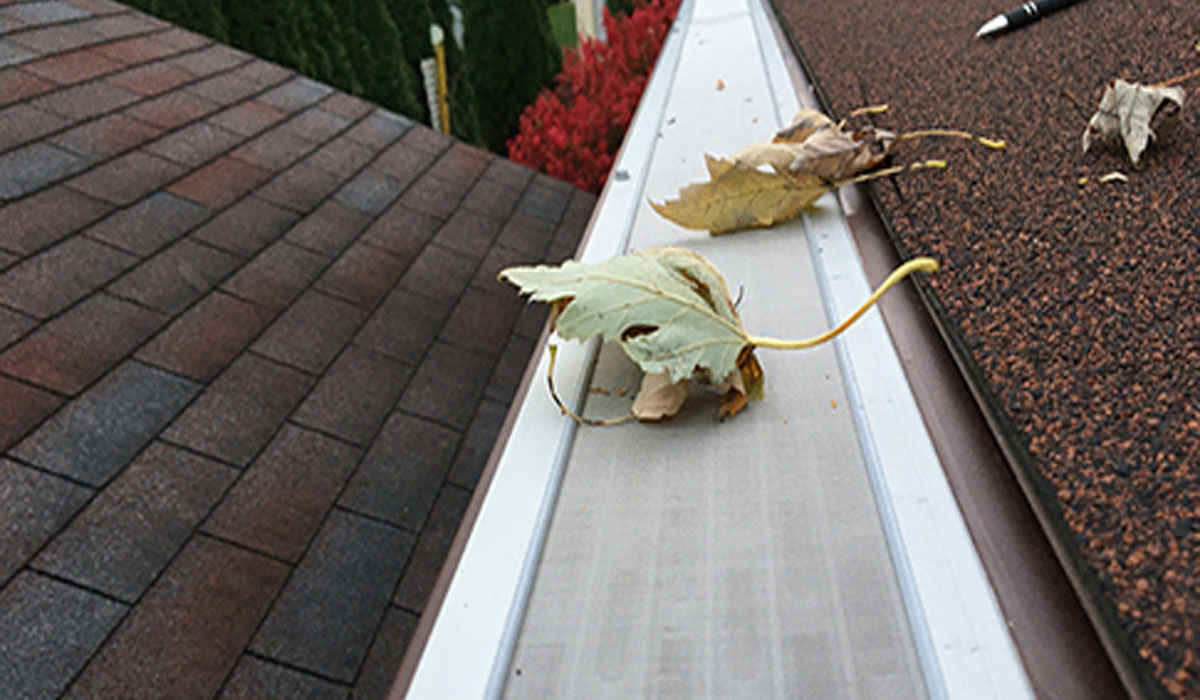Gutter guards are a fantastic way to reduce the amount of debris entering your gutters, helping to prevent clogs and ensuring rainwater flows freely. But while they greatly reduce the need for frequent gutter cleaning, they still require regular maintenance to stay effective. Over time, even the best gutter guards can accumulate fine debris, mold, and moss, which can affect their performance. Here’s how to maintain your gutter guards to keep them functioning at their best for years to come.
Why Gutter Guard Maintenance Matters
Gutter guards are designed to block larger debris, such as leaves and twigs, from entering your gutters. However, smaller particles like dirt, pine needles, pollen, and shingle granules can still accumulate on top of or inside the gutter guards. Without regular maintenance, these tiny particles can reduce water flow and eventually lead to clogs, defeating the purpose of the guards. Proper maintenance ensures that your gutter guards:
- Continue to block larger debris effectively
- Support optimal water flow and drainage
- Prevent mold, moss, and algae buildup
- Extend the life of both the gutter guards and the gutter system
Let’s go over some essential steps to keep your gutter guards in top shape.
1. Clean Your Gutter Guards Seasonally
Although gutter guards significantly reduce the amount of debris that enters your gutters, they aren’t completely maintenance-free. Cleaning them seasonally — or at least twice a year — is crucial for optimal performance. The best times to do this are:
- Fall: After most leaves have fallen, clear any buildup from autumn foliage.
- Spring: Clean up winter debris and pollen, especially if you live in a high-pollen area.
In areas with dense tree coverage, you may need to clean them more often, as fine debris from trees like pines can accumulate quickly.

2. Remove Debris from the Surface of the Guards
Most gutter guard systems have a surface where leaves, twigs, and other debris can accumulate. Use a soft brush or a gloved hand to clear off any visible debris. Avoid using any sharp tools that could damage the guard material. If you have mesh or screen-style guards, make sure the holes aren’t clogged with fine debris, as this can block water flow. For more stubborn dirt, a gentle rinse with a garden hose can help wash away any remaining debris.
3. Flush the Gutters and Downspouts
Even with gutter guards, small debris can sometimes slip through, settling at the bottom of the gutter or in the downspouts. To prevent any blockages, periodically flush your gutters and downspouts with water. This will push any small particles through the system, ensuring there’s no buildup that could lead to future clogs.
To do this:
- Place your garden hose at the top end of the gutter and let water flow through the system.
- Check the downspouts for any blockages. If water isn’t flowing freely, use a plumber’s snake or a long, flexible tool to clear the blockage.

4. Inspect for Signs of Mold, Algae, or Moss
Mold, algae, and moss can form on and around gutter guards, especially in humid or shaded areas. Over time, this buildup can lead to clogs and decrease the lifespan of your gutter guards. Regularly inspect the gutter guard surface and gutters for any signs of mold or green patches.
To remove moss or algae:
- Mix a solution of water and mild dish soap.
- Use a soft brush or sponge to gently scrub affected areas.
- For stubborn mold, you may need to use a solution of diluted vinegar. Avoid using bleach, as it can damage certain types of gutter guard materials.
5. Check for Proper Fit and Fastening
Over time, gutter guards can shift due to wind, storms, or the natural settling of your gutter system. Check to ensure your gutter guards are still securely fastened and properly aligned. Loose or misaligned guards can allow larger debris to enter the gutter and may even detach during a heavy storm.
- Re-secure Loose Guards: If you notice any areas where the gutter guards have come loose, refasten them according to the manufacturer’s instructions. For some guards, this might involve tightening screws, while others may require simply snapping them back in place.
- Inspect Guard Seams: If you have sectional guards, ensure that the seams are aligned tightly and that there are no gaps where debris could enter.
6. Trim Nearby Trees and Overhanging Branches
Keeping nearby trees trimmed is a simple but effective way to reduce the amount of debris that falls onto your gutter guards. Large trees that overhang your roof or gutters are a common source of fallen leaves, twigs, and seeds, which can quickly accumulate on top of gutter guards.
- Regular Trimming: Trim branches back each season to reduce the amount of debris that could potentially clog the guards.
- Consider Leaf Shedding Patterns: Different trees shed at different times of the year. Pay attention to when your surrounding trees drop the most debris, and plan an extra cleaning around that time if needed.
7. Look for Signs of Gutter or Roof Damage
While inspecting and maintaining your gutter guards, take the opportunity to check for any signs of damage to the gutters themselves and the roof edges. Gutter guards can sometimes mask issues like small leaks or sagging sections of the gutter, so take time to carefully inspect for any signs of rust, cracks, or loose parts.
- Check for Rust or Corrosion: Metal gutters and guards can develop rust over time, especially if there’s constant moisture or standing water.
- Look for Sagging Gutters: Sagging or misaligned gutters can affect the performance of your guards, causing debris to build up unevenly.
8. Test Water Flow After Maintenance
After cleaning and inspecting your gutter guards, test water flow to ensure everything is working smoothly. Use a garden hose to simulate rainfall and check that water flows freely along the gutters and out through the downspouts. Testing water flow can help you identify any problem spots you may have missed during maintenance.
9. Consider a Professional Inspection Every Few Years
While DIY maintenance goes a long way, having a professional inspect your gutter guards and gutters every few years can help catch any issues you may overlook. Professionals have the experience to spot potential problems, such as minor leaks or alignment issues, and can offer guidance on repairs or upgrades if needed.
Final Thoughts
Gutter guards are a valuable investment for any home, but maintaining them is key to maximizing their effectiveness and longevity. By following these maintenance tips, you’ll prevent debris buildup, reduce the risk of clogs, and extend the life of both your gutter guards and your gutter system. With regular care, your gutter guards will continue to protect your home, keep maintenance to a minimum, and ensure your home stays safe from water damage for years to come.
